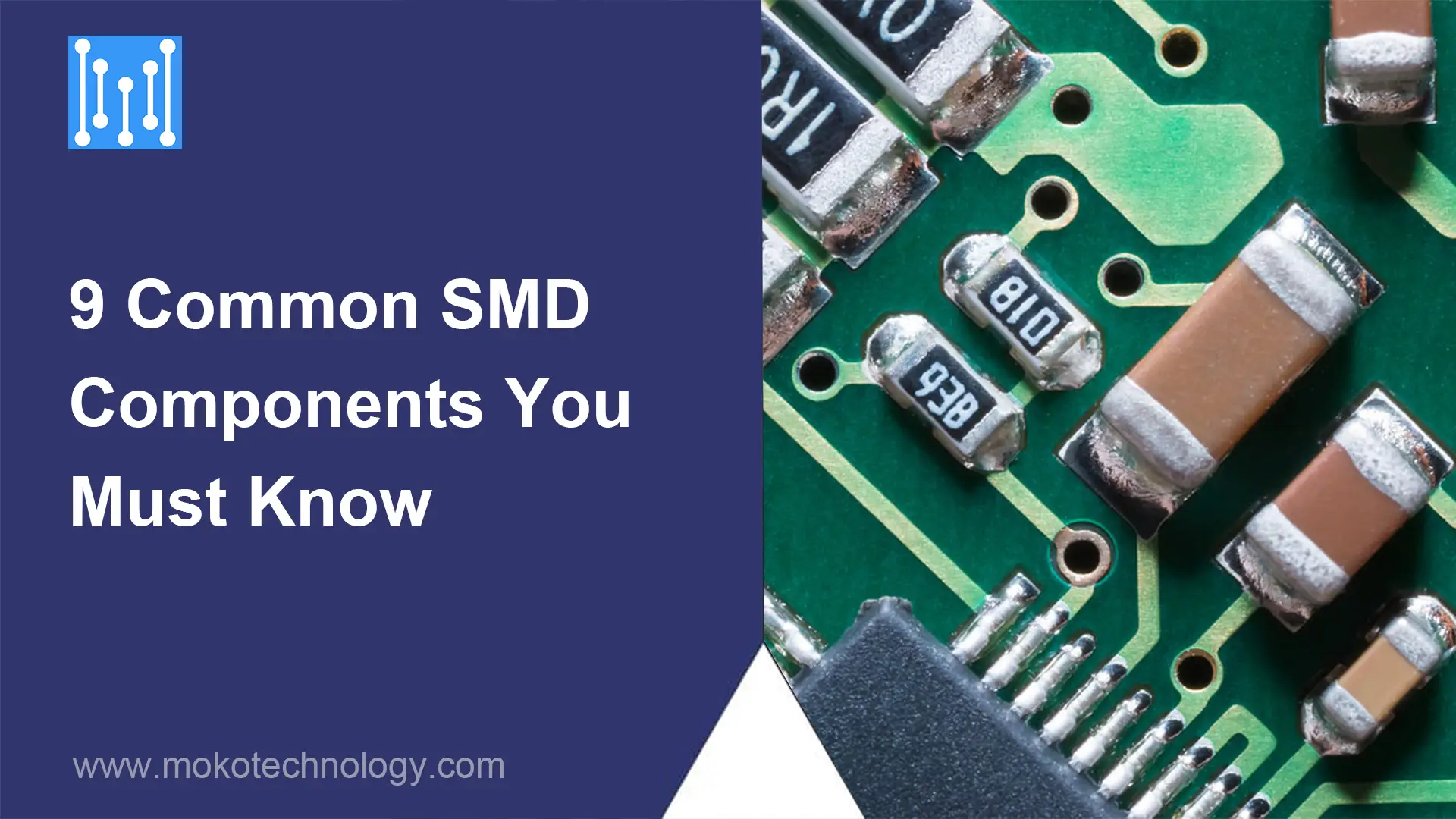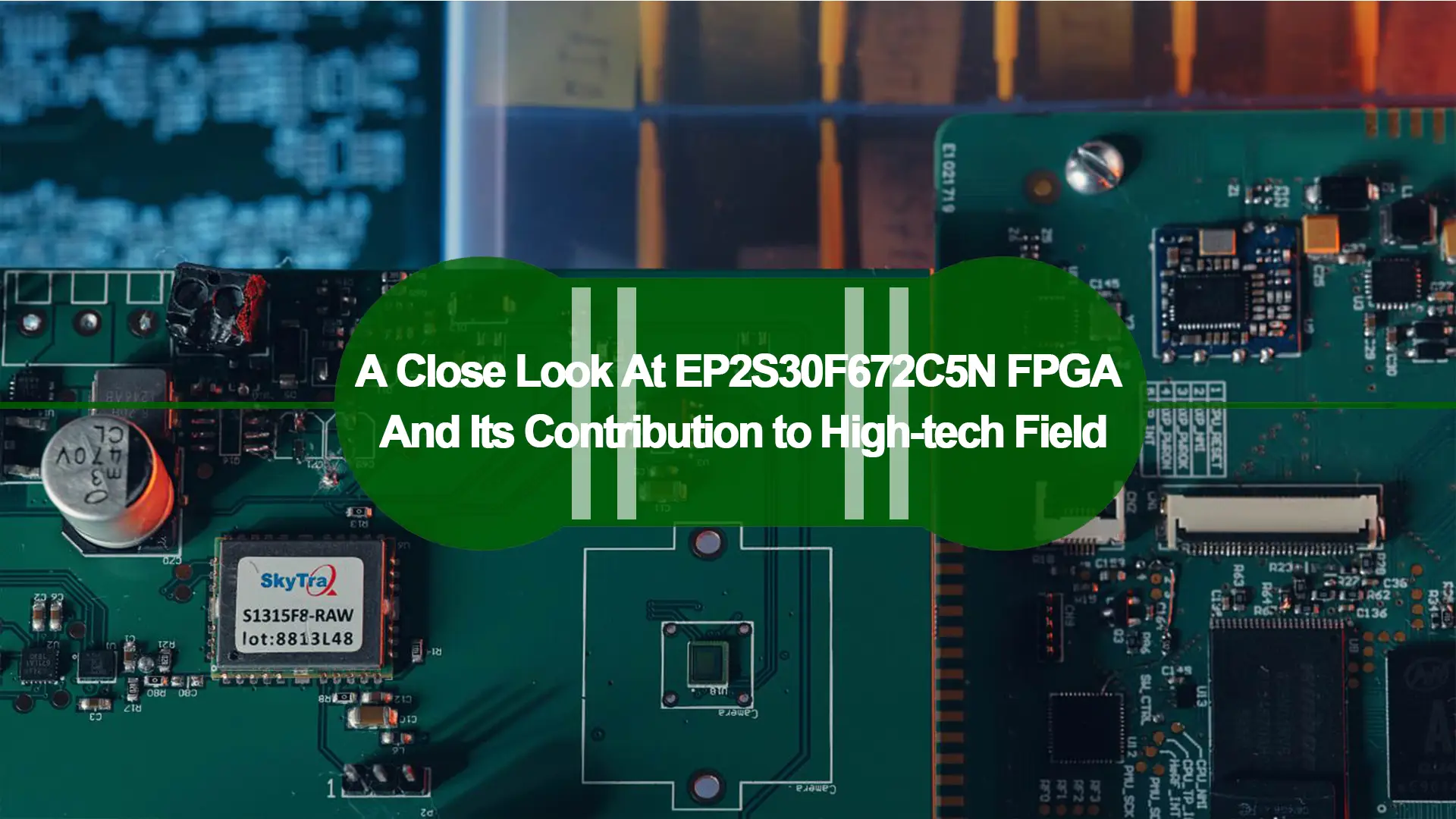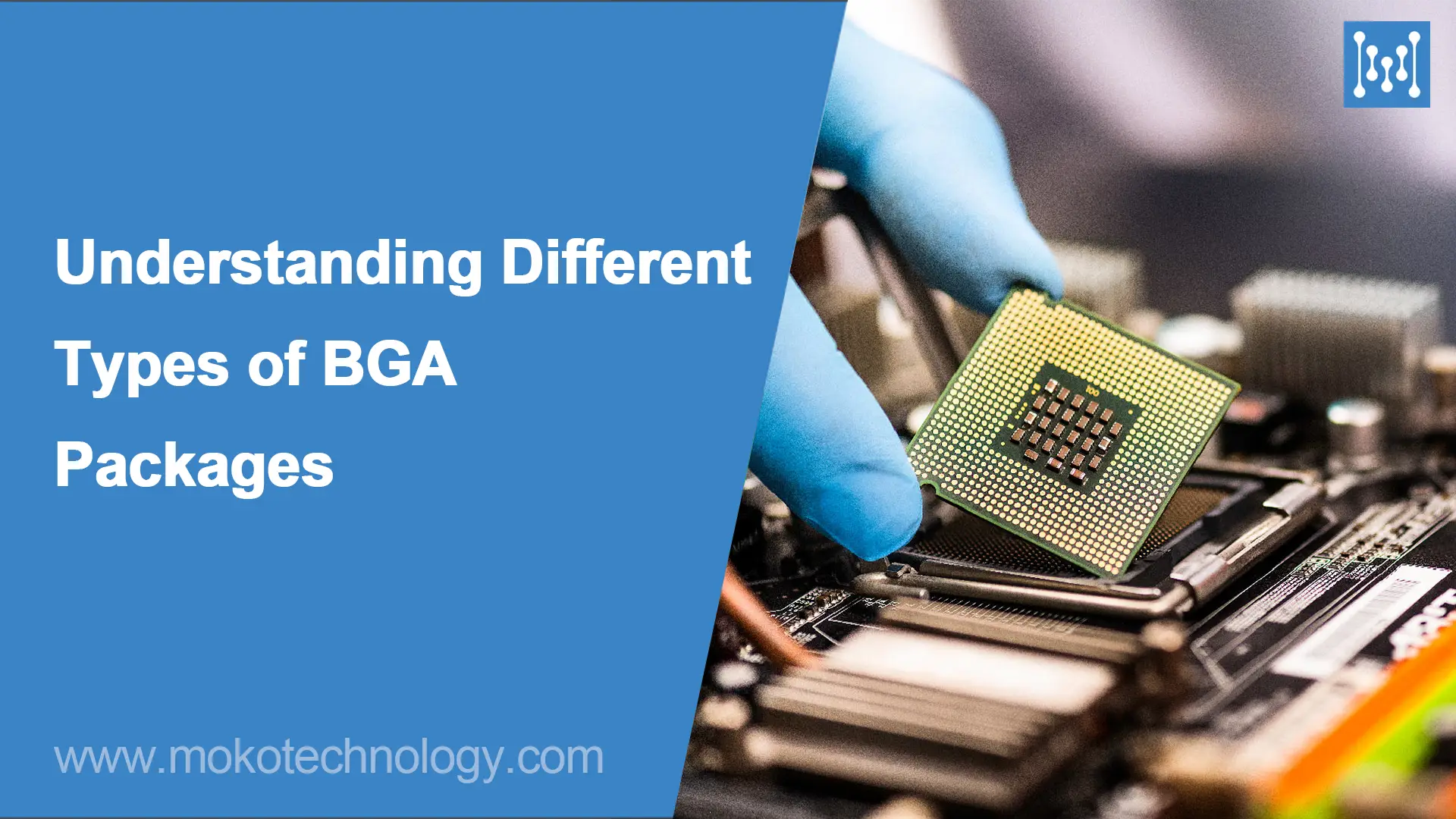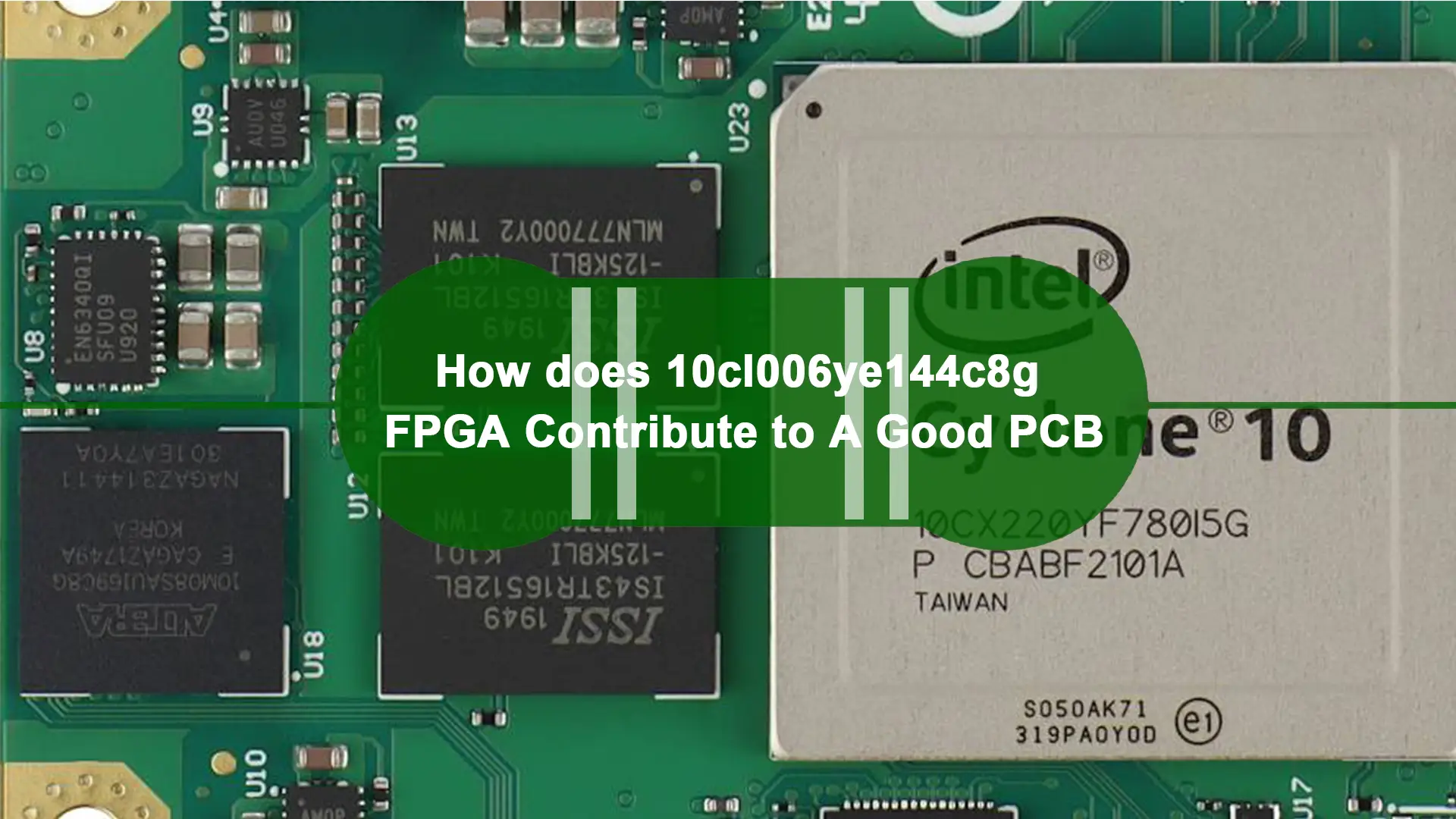I’ve always been fascinated by the tiny electronic components that power our modern devices. As I’ve learned more about electronics, I discovered the world of surface mount devices (SMDs). These small surface mount components allow engineers to pack more computing power into ever-shrinking gadgets. In this beginner’s guide, we will focus on 9 common SMD components you’re likely to encounter. For each component, we’ll explore its function and purpose, how to visually identify it, and proper soldering techniques. Let’s get started!
List of 9 Common SMD Components
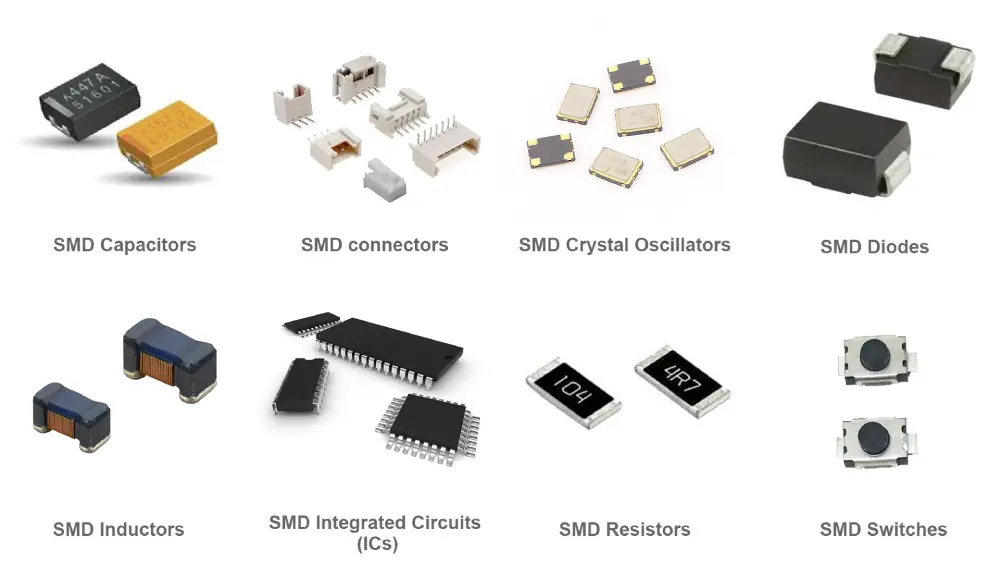
- SMD Resistors
Resistors limit the flow of electric current in a circuit. These components can be obtained in a range of dimensions and with assorted values determining their opposition to current flow.
- SMD Capacitors
Storing and releasing electrical energy, capacitors have ceramic, tantalum, and electrolytic types. Each type is suitable for different applications based on their specific characteristics.
- SMD Inductors
Inductive components amass energy within a magnetic realm generated by electrical current traversing through them. These devices find frequent utilization in filtering circuits, oscillators, and power supply implementations.
- SMD Diodes
Used in rectification, signal demodulation, and switching applications, SMD diodes facilitate the flow of current in one direction while obstructing it in the opposite direction.
- SMD Transistors
Transistors amplify or switch electronic signals and are fundamental building blocks of electronic devices. There are different types of transistors, including bipolar junction transistors (BJTs) and field effect transistors(FETs).
- SMD Integrated Circuits (ICs)
Integrated circuits are the backbone of countless electronic gadgets we use every day. Inside those tiny black chips lies an entire world of complex circuitry – packed densely together are logic gates, microcontrollers, amplifiers, and many other components.
- SMD Crystal Oscillators
These components use a piezoelectric crystal to generate a precise and stable frequency, commonly used in microcontrollers and communication devices.
- SMD Connectors
SMD connectors, serving to establish electrical connections between PCBs or electronic components, encompass a variety of types such as headers, sockets, and board-to-board connectors.
- SMD Switches
MD switches, essential in electronics, interrupt or establish electrical connections within compact devices. Encountered in various electronic gadgets, they come in both momentary and toggle configurations.
How to Identify SMD Components
When trying to analyze an unfamiliar PCB, a magnifying glass or inspection microscope is your best friend. But simply being able to read the tiny markings is the first step. Many components give clues based on their package style:
Rectangular – Usually SMD resistors or capacitors
Square spiral – Surface mount inductor
Black epoxy with leads – Can indicate a diode
Small plastic package – Probably a transistor
Flat rectangular with many leads – Surface mount IC
Referencing a datasheet for the markings is the next step. Resistors and capacitors use numerical codes like 102 = 10,000 ohms. Transistors and ICs contain alphanumerical part numbers.
If the part markings aren’t visible, measuring the package dimensions can provide clues on component type and values based on industry standards. Additionally, scanning online component databases by appearance is a great troubleshooting technique.
With practice, visually identifying SMD components becomes much easier. It unlocks the ability to understand and troubleshoot SMD heavy circuits. Now that we can ID parts, let’s look at how they get attached to the PCB.
Soldering SMD Components
Soldering through-hole parts is easily done with a soldering iron. But surface mount devices require a different approach. Their pads and leads are too small for an iron to contact. Instead, SMD soldering relies on heating the entire board in an oven. There are 2 PCB soldering techniques that are usually used for SMD soldering:
Reflow Soldering
In reflow soldering, a solder paste is first applied to the PCB pads using stencils or syringes. Next, the components are placed onto the paste deposits by pick-and-place machines. Finally, the PCB enters a reflow oven. The board passes through heating zones that raise the temperature high enough to melt or “reflow” the solder paste. As it liquefies, the solder wicks onto the component leads and PCB pads via capillary action. When the board exits the oven, the solder rapidly cools and hardens, forming mechanical and electrical bonds.
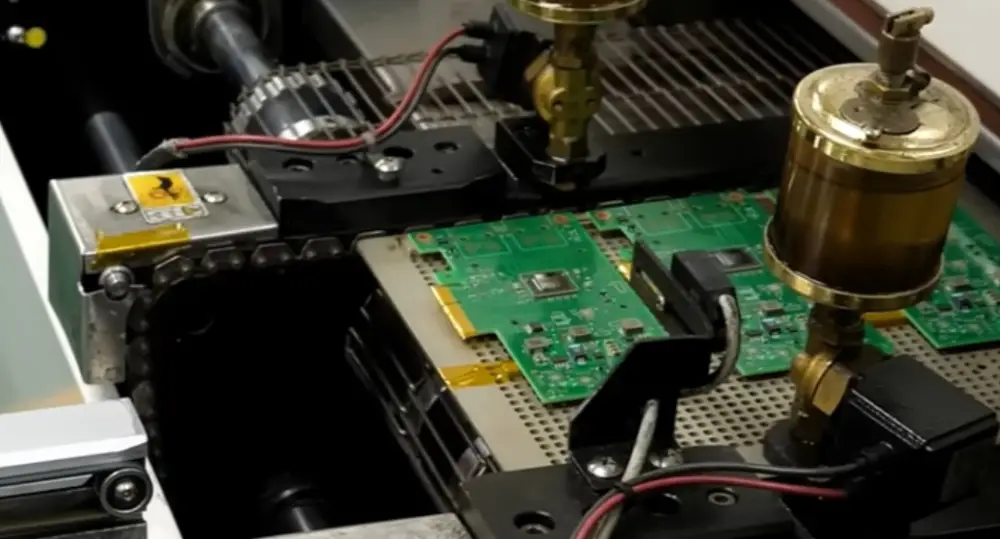
Wave soldering
For high volume manufacturing, the conveyorized wave soldering process is common. First, one side of the PCB gets loaded with SMD components and solder paste. After reflowing that side, the bottom goes through a wave soldering system. This involves conveying the board over a container of liquid solder. Pumps produce an inclined wave that briefly contacts the underside of the PCB. The wave momentarily solders through-hole component leads and bottom side traces. Precision speed control prevents excess solder build up. Wave soldering boosts efficiency when combining through-hole parts and SMDs on one board.
Further reading: Wave Soldering vs. Reflow Soldering: What’s the Difference?
Wrapping It Up
Working with surface mount devices can seem daunting at first, but it gets much easier once you understand the basics. The most common SMD components are resistors, capacitors, and integrated circuits. Getting familiar with identifying these different part types is the key first step to feeling comfortable with surface mount assembly and design. Please let me know if you have any other questions, I’d be happy to discuss strategies for getting started with SMDs.
